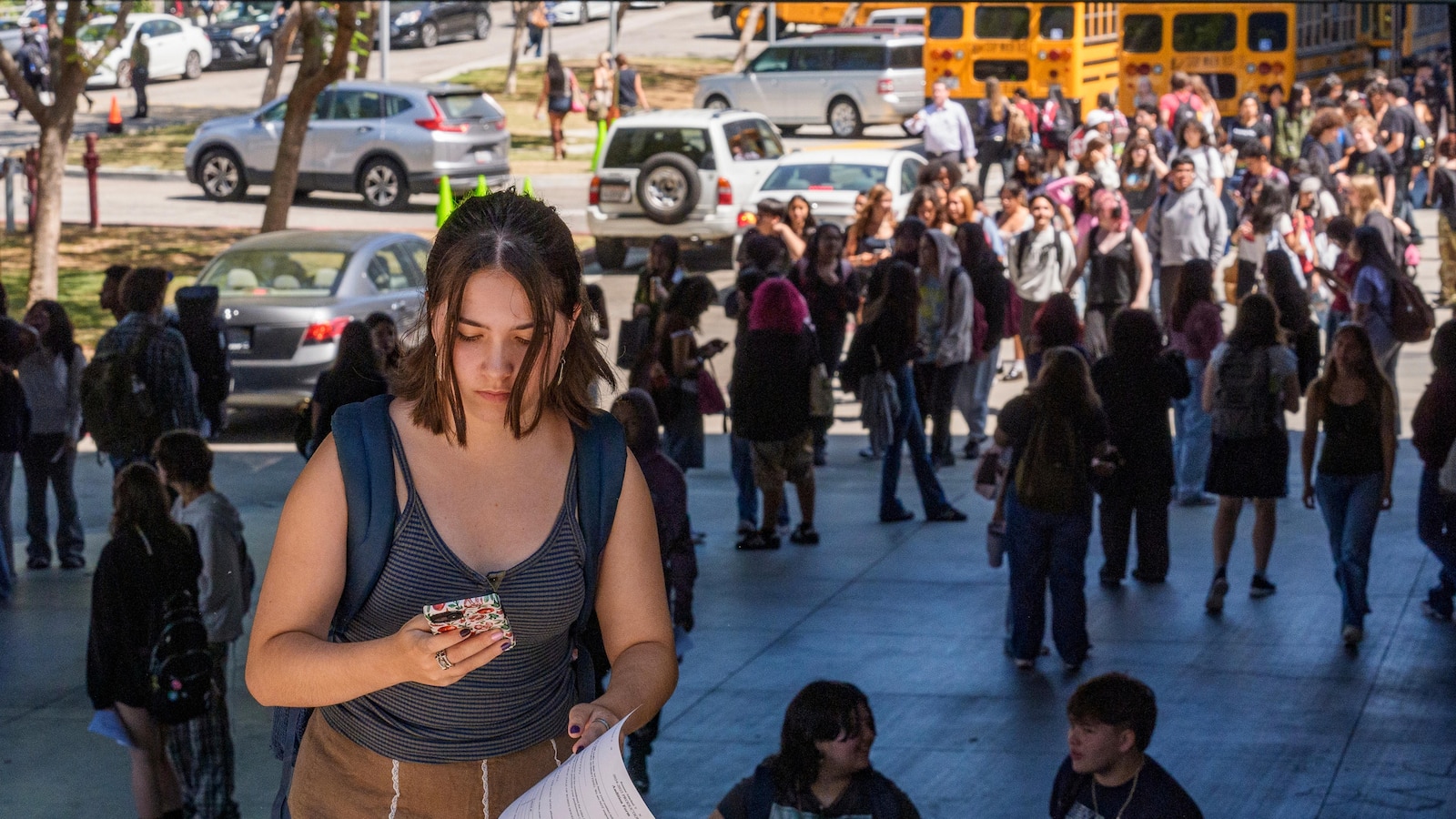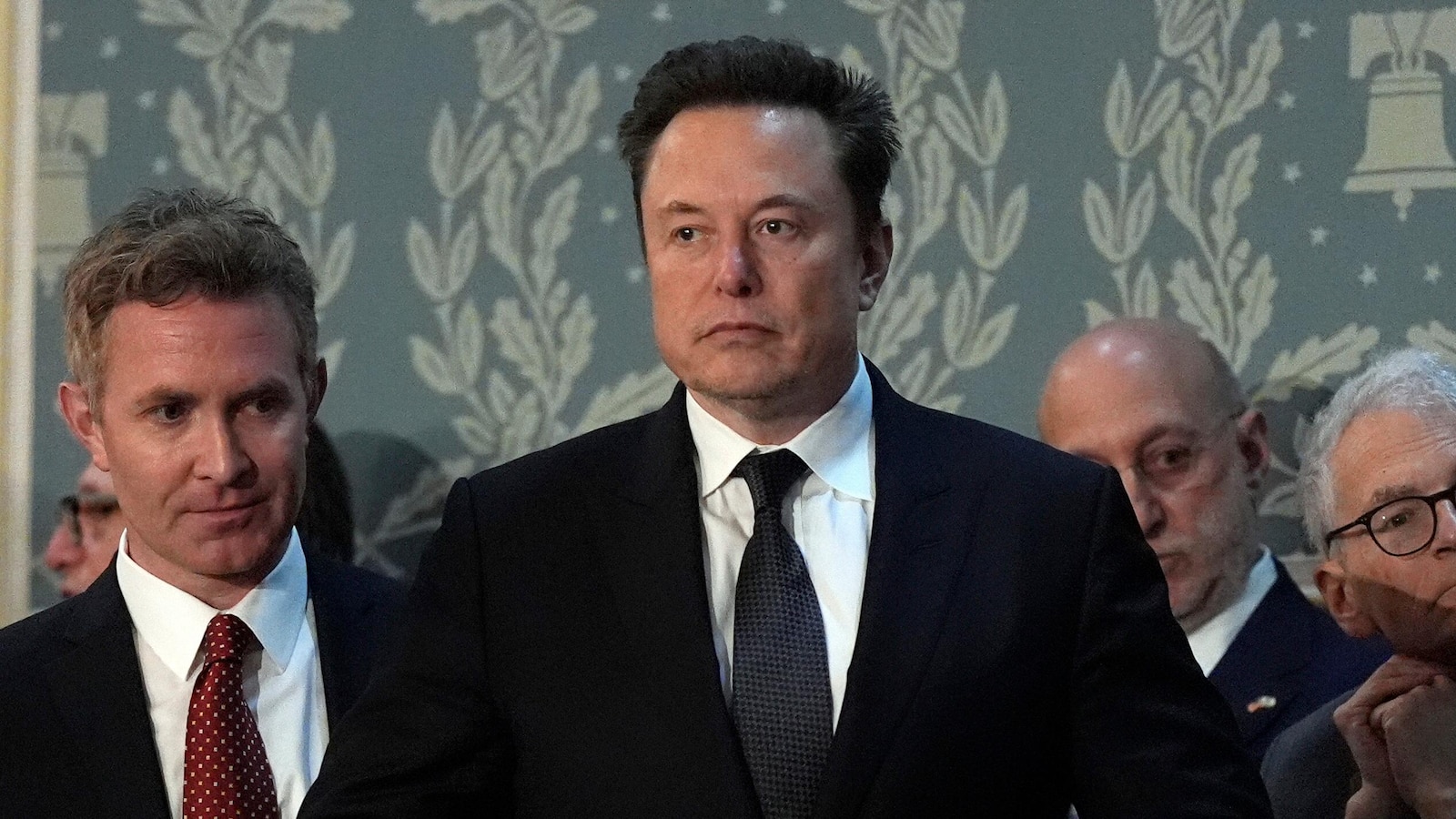
SACRAMENTO, Calif. — School districts in California will have to create rules restricting student smartphone use under a new law Democratic Gov. Gavin Newsom signed Monday.
The legislation makes California the latest state to try to curb student phone access in an effort to minimize distractions in the classroom and address the mental health impacts of social media on children. Florida, Louisiana, Indiana and several other states have passed laws aimed at restricting student phone use at school.
“This new law will help students focus on academics, social development, and the world in front of them, not their screens, when they’re in school,” Newsom said in a statement.
But some critics of phone restriction policies say the burden should not fall on teachers to enforce them. Others worry the rules will make it harder for students to seek help if there is an emergency or argue that decisions on phone bans should be left up to individual districts or schools.
“We support those districts that have already acted independently to implement restrictions because, after a review of the needs of their stakeholders, they determined that made the most sense for their communities with regards to safety, school culture and academic achievement,” said Troy Flint, a spokesperson for the California School Boards Association. “We simply oppose the mandate.”
The law requires districts to pass rules by July 1, 2026, to limit or ban students from using smartphones on campus or while students are under the supervision of school staff. Districts will have to update their policies every five years after that.
The move comes after Newsom signed a law in 2019 authorizing school districts to restrict student phone access. In June, he announced plans to take on the issue again after the U.S. surgeon general called on Congress to require warning labels on social media platforms and their effects on young people.
The governor then sent letters to districts last month, urging them to limit student device use on campus. That came on a day that the board for the second-largest school district in the country, Los Angeles Unified, voted to ban student phone use during the school day beginning in January.
Assemblymember Josh Hoover, a Republican representing Folsom, introduced the bill with a bipartisan group of lawmakers who are also parents.
Phones are restricted where Hoover’s children — ages 15, 12 and 10 — attend school. Many of the students don’t always like the policy, which is in part a reflection of how addictive phones can be, he said.
“Anytime you’re talking about interrupting that addiction, it’s certainly going to be hard for students sometimes,” Hoover said. “But I think overall they understand why it’s important, why it helps them focus better on their classes and why it actually helps them have better social interaction with their peers face to face when they’re at school.”
Some parents have raised concerns that school cellphone bans could cut them off from their children if there is an emergency. Those fears were highlighted after a shooting at a Georgia high school left four dead and nine injured this month.
The 2019 law authorizing districts to restrict student phone access makes exceptions for emergencies, and the new law doesn’t change that. Some proponents of school phone restrictions say it’s better to have phones off in an active shooter situation, so that they don’t ring and reveal a student’s location.
Teachers have reported seeing students more engaged since the Santa Barbara Unified School District began fully implementing a ban on student phone use in class during the 2023-24 school year, Assistant Superintendent ShaKenya Edison said.
Nick Melvoin, a Los Angeles Unified board member who introduced the district’s resolution, said passing the policies at the district or state level can help prevent students from feeling like they’re missing out on what’s going on on social media.
Before student cellphone use was banned during the school day at Sutter Middle School in Folsom, students had been seen recording fights, filming TikTok challenges and spending lunchtime looking at online content, Principal Tarik McFall said. The rule has “totally changed the culture” of the school so that students spend more time talking to one another, he said.
“To have them put away, to have them power off and that be a practice, it has been a great thing,” McFall said.
Teachers have become more reliant in recent years on technology as a learning tool for students, particularly since the COVID-19 pandemic, said Mara Harvey, a social studies teacher at Discovery High School in the Natomas Unified School District.
The district, which is in Sacramento, provides students in the first through 12th grades with a Chromebook, where they can access online textbooks and Google Classroom, a platform where teachers share class materials. But if a student forgets their Chromebook at home, their smartphone becomes “the next viable choice for them to access the curriculum,” Harvey said.
___
Austin is a corps member for The Associated Press/Report for America Statehouse News Initiative. Report for America is a nonprofit national service program that places journalists in local newsrooms to report on undercovered issues. Follow Austin on X: @sophieadanna
In an effort to combat distractions and improve student focus in the classroom, California has implemented restrictions on student smartphone use at school. The new policy, which went into effect at the beginning of the school year, prohibits students from using their smartphones during instructional time, unless given explicit permission by a teacher.
The decision to implement these restrictions comes as educators and parents alike have expressed concerns about the negative impact of smartphones on students’ academic performance and overall well-being. Studies have shown that excessive smartphone use can lead to decreased attention spans, reduced cognitive abilities, and increased levels of stress and anxiety among students.
By limiting smartphone use during school hours, California aims to create a more conducive learning environment where students can fully engage with their studies and interact with their peers without the distractions of constant notifications and social media. Teachers hope that this policy will encourage students to be more present in the classroom and foster better communication skills.
While some students may initially resist the new restrictions, many educators believe that it is a necessary step towards promoting a healthier and more productive learning environment. By setting clear boundaries around smartphone use, schools can help students develop better self-regulation skills and improve their ability to focus on their studies.
In addition to restricting smartphone use during instructional time, California schools are also implementing measures to educate students about responsible technology use and digital citizenship. By teaching students about the potential dangers of excessive smartphone use and encouraging them to practice mindfulness and self-control, schools hope to empower students to make better choices when it comes to their technology usage.
Overall, the implementation of restrictions on student smartphone use in California schools represents a positive step towards creating a more focused and productive learning environment. By setting clear boundaries and promoting responsible technology use, educators are helping students develop the skills they need to succeed academically and thrive in an increasingly digital world.


